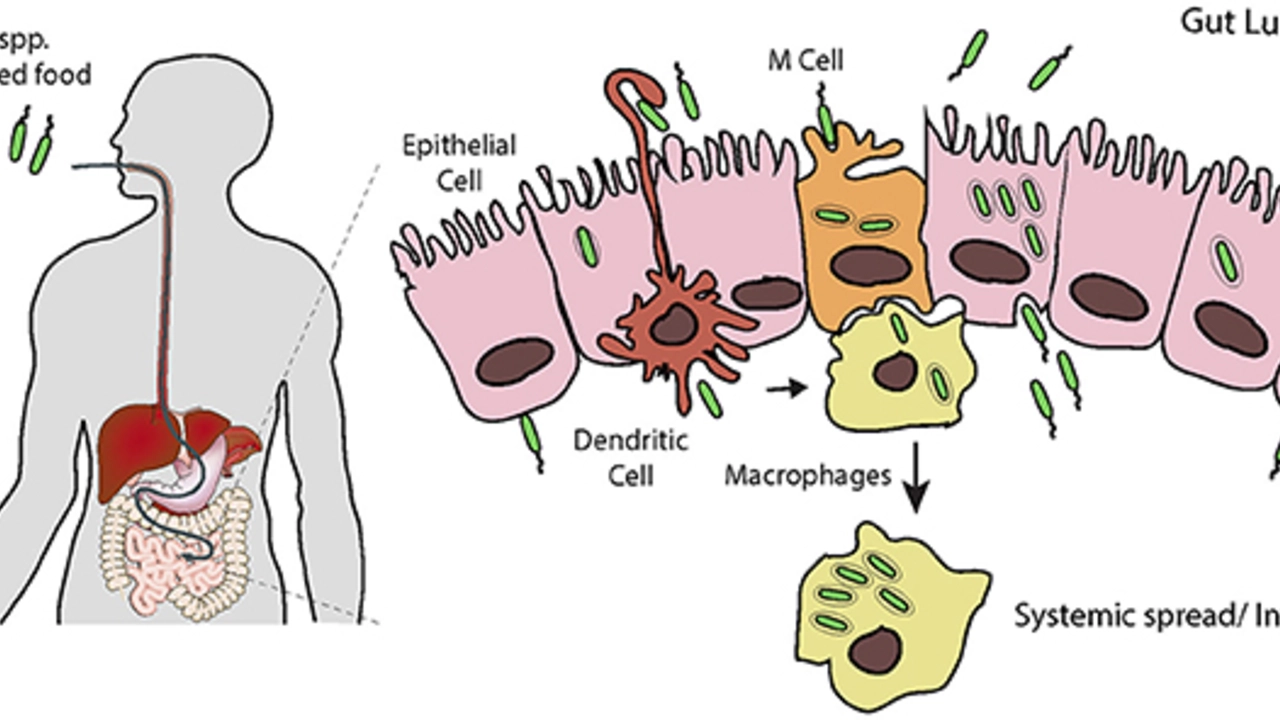
23 Aug 2023
Salmonellosis: A Closer Look at this Troublesome Foodborne Disease
Allow me to share something. I am Lydia. And darling, food is my obsession! However, as a food lover, I'm always cautious about foodborne diseases because who wants to enjoy a delicious meal only to end up lying sick in bed, right? One of the worst enemies we have in that aspect is Salmonellosis. Yeah, it seems like a long string of microbes just teamed up to form an annoyingly hard-to-pronounce band name, but really, Salmonellosis is an illness caused by the Salmonella bacteria, which are microscopic creatures that have nothing better to do than ruin our meals and carry on their microscopic shenanigans.
You see, Salmonellosis is usually known to manifest itself through symptoms such as diarrhea, fever, and abdominal cramps. It's like an unsolicited festive party in your digestive system where you’re the unhappy and unplanned host. It sounds horrible, right? And it is! That’s why we need to be vigilant about the food we consume because the bacteria mostly find their way into our bodies through the food we consume. I know, something so minuscule spoiling our grand feast, outrageous!
How Salmonella and Foodborne Disease Are Interconnected
So here's the dish on Salmonella. It's a form of foodborne disease. Hang on a second, you might think. Lydia, are you saying that every foodborne disease is Salmonella? Well, not quite. You see, foodborne diseases are like a big, unhappy family, and Salmonella is just one of the members. But, quintessentially yes, Salmonellosis is one of many foodborne diseases. It's like the cousin who always shows up uninvited to the family barbecues and proceeds to ruin everyone's fun.
I mean, don’t you find it fascinating that something as tiny as a bacterium can make a full-grown human toss and turn in sickness? The audacity of these microscopic rascals! But our bodies, bless them, they resist the invasion and work overtime to give these unwanted guests an exit pass. But while they're there, they cause foodborne illness, which is an umbrella term covering any illness resulting from contaminated food or water.
The Key Culprits: Food Items Susceptible to Salmonella
Now, it's time to blow the whistle on some potential villains. If Salmonella was a criminal mastermind, certain food items would be its favourite sidekicks! There are certain foods that are like covert undercover agents for Salmonella - raw or undercooked eggs, raw milk, raw or undercooked meat, poultry, fish and shellfish. I know, it breaks our heart to think of our favourite sunny-side-up or the fantastic tuna tartare playing treachery, but sadly it's true.
But guess what the plot twist is? Salmonella can also be found in your pet's food and treats, especially the raw ones. As a guardian to my irresistibly adorable Golden Retriever, Max, I have to ensure his food doesn't become the gateway for these bugs to enter my home. Just imagine, who could resist those puppy eyes asking for more treats? Simply unthinkable! By ensuring your pet's food is safe, you're not just protecting your furry friend, but you are also safeguarding your own health.
Prevention: Your Anti-Salmonella Shield
Now, to the most important part. Yes, the bacterial war-zone painted above is scary but believe it or not, there are ways to keep these microscopic germ-gremlins at bay. How? Let’s roll up our sleeves and combat these invincible enemies. Ensuring proper hygiene is the primary recourse against invading Salmonella bacteria. Always wash your hands before preparing the food (and I mean really wash them, not just a casual rinse under a running tap). Be vigilant about cooking food thoroughly and discarding any spoiled food promptly. It's better to lose one meal than to sacrifice the next few days to illness, right?
Another pro-tip is regular disinfection of kitchen surfaces and utensils, especially cutting boards and knives that have been involved in preparing raw meat. It's like cleaning up after a crime scene to ensure no traces left behind. And remember how I mentioned that our pets' food can carry Salmonella? Well, always be careful to clean any pet feeding equipment promptly and regularly. Max certainly doesn’t like to eat his food on dirty dishes and I wouldn’t either!
So there you have it, my dear reader. This is our little journey into the microscopic world of Salmonella and its connectivity to foodborne diseases. It might seem like a daunting task to keep these dastardly microbes at bay, but with a bit of sensible cooking and hygiene habits, you can enjoy your feast without any unwelcome microscopic gate-crashers. Let's vanquish these bacterial invaders and reclaim our rightful enjoyment of food, shall we?
Write a comment